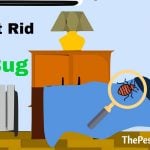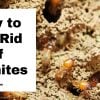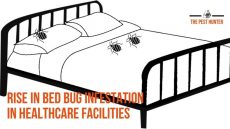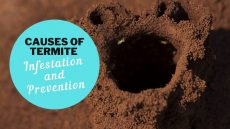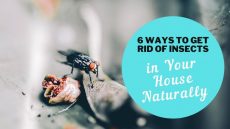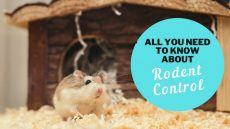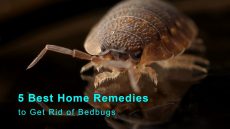Moth Infestation, Identifcation, Types Of Moth & Treatment Guide
No one can deny the fury and anger that boils under your skin when you pull out your favorite woolen sweater just to discover that it has been withered by evil moths.
Well, the good news is that you don’t need to quit your job and adopt a lifetime goal of killing these moths or burn down your house to get rid of those hungry mouths and start a clean, fresh life!
However, the bad news is that moths are silent dwellers and might munch away your clothes and other materials without leaving any significant clue behind for us to find out.
Owning a luxurious wardrobe with lots of furs and expensive silks might be sending out an invitation for moths to infest. They are attracted to anything from silk, food grains, wool or any other fabric. Moths are usually attracted to light sources.
Some effective pesticides can be found from below:
Dr. Killigan’s Premium Pantry Moth Traps
Wondercide Natural Indoor Pest Control Home and Patio Spray
Moth Appearance: How do moths look like?
The body size of moths may vary species to species. There are massive sized moths as well as tiny ones. The sizes can vary from the tip of a pencil to some small chirping bird. Some might appear in metallic colors while some might appear dull brown or grey in color.
Signs of moth infestation
The signs are easy to catch only if you know what to.
- Pull out clothes from your closet and look out for tiny, irregular holes in those. Do take a close look especially on items made up of wool, fur or silk.
- Look out for smelly clothes which appear discolored.
- Carefully inspect the corners of the closets for infestation. Moths usually like to invest and lay eggs at damp, dark and undisturbed places. Look out for cocoons, droppings, and webbing left by them.
- To find out moth infestation in food items, look out for stickiness which happens due to moth secretion as well as food appearing stale even before its expiry.
- Most importantly, the presence of crawling caterpillars just confirms moth infestation.
Blue Rhino SkeeterVac SV3100 Mosquito Killer
Overall Best For All Flying Insect
Where do moths come from?
These silent intruders are often introduced through our food grains. That is one reason why our pantry should be inspected at regular intervals. Birds and rodents are also a medium through which these moths can make their way to our home.Moreover, some specific breed of moths feeds on coniferous tree leaves including leaves of oak trees, walnut, rose, maple, and willow, etc. These trees suffer heavy damage by these moths. Healthy ones are able to withstand the damage but the younger trees aged between 1 and 3 years can’t withstand the same after heavy defoliation by the moths.
So, if you have any of these trees near your house, you shouldn’t be surprised to see moths paying you a visit at your house. Moreover, these can also fly through an open door or window.
What do moths eat?
Furs, leathers, woolen stuff, silken clothes even cotton are all in the list of foods these moths like to munch on. Moths can attack blankets, pillow, carpet, rugs and fabric materials to get access to the attached dirt, salt from sweat, stains from food spilled like milk or coffee, etc.
Dirty woolen clothes are more susceptible to moth attack. Some of these moths are also known to attack crops and vegetables like tomatoes and cabbages which is very damaging. Moths also do feed on bird droppings, fruits, pollens, and animal dungs.
But you might be surprised to know that the larvae and not the adult, is disastrous and do all the chewing to your belongings! These adults, by using their proboscis (the long tube attached to their mouth) drink nectar from flowers to get their nourishment.
The life cycle of moths
The fertile adult females can lay up to 300 eggs. Within a period of a couple of weeks, the larvae hatch and start feeding. The eggs are laid on or nearby the food materials. After these moths attain full growth, then the pupation begins. The formation of cocoon starts during this phase.
The moths usually select cracks, crevices, ceilings like places to start spinning the cocoons. It takes around 30 days for these to emerge as full grown adults. Temperature plays a vital role in the completion of the whole process. Optimum temperature boosts the process.
Different types of moths and how to identify them?
According to a report, there are about 11000 species of moths found in the US! And in the UK, moths are reported of 2400 species according to ukmoths.org.uk
1. Webbing clothes moth:
These are very common in the US throughout all its states. These moths are of beige in color with reddish hairs on their heads. The metallic brown colored wings when extended appears about half an inch in size. Adult males have the ability to fly but the female counterparts are not much of a flyer. They can only afford to fly inside houses and not more.
2. Life cycle:
The larvae seem to undergo a drastic biological change in its cocoon which makes the adults capable of laying eggs on the same day it surfaces out of its cocoon. Fifteen days to thirty days is the normal lifespan for an adult. A female lays approximately 45 eggs or more. The eggs of webbing clothes moth are of ivory color and tiny in size. The process of hatching is quicker in summer than in winter.The larvae of this breed of moths are white in color and half an inch in length. The larvae have to go through multiple molts to develop completely. Parameters like food availability, optimum temperature, and relative humidity impact the overall development process a lot.
After this, the larva spins a silk pupal case and starts its pupal stage of about 10-40 days. The total life cycle may vary from 50 days to even 4 years at maximum.
3. Clothes moth or Brown House Moth:
This is one of the tiny species of moth sizing about 6 to 8 mm in length. These moths prefer to stay in dark places like your attics, closets or within the fold of your favorite fabrics in an undisturbed way. This type of moths is not so known for flying too much.
The notorious cream-colored larvae destroy our clothes and fabrics and anything which has keratin protein one of the constituents. The larvae can grow up to 18mm in length. These larvae similarly like butterflies then undergo all the development stages like pupa and then to adult.
4. Case making clothes moth
This particular species of moth is not so common like that of the webbing clothes moth and mostly found in the southern part of the US including other parts as well. The brown colored case making clothes moth is about half an inch in length while the larvae of the same extent about three-fourths of an inch. This moth unlike clothes moths, make regular holes in fabrics.This moth has 3 identifiable dark spots on the wings. The larva spins and carries a silken case along with it while it feeds, hence its name. When it approaches its correct time to pupate, it seals off both the open ends of the case and pupates.
5. Pantry moth or Meal Moth
If you find your food grains are under moth attack, then you’re more likely dealing with the Indian meal moth or the Mediterranean flour moth or the Angoumois grain moth. How would you feel when you find something wriggling in your food? Creepy isn’t it?When your food is infested by the larvae, you will notice webs and white larvae with brown heads in your food. These moths are relatively easy to identify as the outer part of the Indian meal moth’s fore-wings would appear copper brown and that of the Mediterranean species would be pale gray with black lines whereas the third one is of beige color with pointed pair of hinds. All of these species are bigger in size than the other species of moths.
6. Carpet moth or Tapestry moth:
These are very popular and has the potential to cause heavy damage. The wingspan of these moths is about 14-18mm. To identify this species you have to check whether the moths have a front third of the forewing to be black in color or not along with the rest of the wing as white with few gray dots.
The head of an adult would be white in color. These can complete multiple numbers of lifecycles in a single year. The speed of this whole process depends entirely upon the temperature, food quality, and availability and humidity, etc.
7. White-shouldered House moths
These moths, unlike the clothes moth, are not that of a damaging by nature. These white-headed moths appear 6 to 10mm in length with mottled wings. The cream-colored larvae generally grow up to 12mm in length. The larvae have red-brown head and are usually found in unheated buildings. These feed on a wider range of foods.
8. Gypsy Moth:
Gypsy moths are commonly found in the South-eastern regions of Canada and north-eastern parts of the US. These moths are mostly seen during the summer. The deciduous trees get impacted the most by the gypsy moth.The larvae emerge from the eggs during the spring. These larvae attack the tree leaves and are mostly active at night. The Gypsy moths are known to change their appearances while they grow. The younger ones of 0.6cm in length would appear brown or black.
The matured ones might grow as long as two and a half inches about 6.3cm. The larvae undergo several molts and then enters the pupal stage and completely transforms into an adult. The brownish-gray males can fly but not the bulky whitish females.These moths reproduce only ones after that both the male and the female moths die.
9. Tussock moth:
The tussock moth as its name suggests has clumps of bristles on their back. These appear like a toothbrush! But when in contact might leave you with rashes. These moths look brown or white in color. The larvae grow about 1 inch in length.
The cocoons are constructed densely with silk and setae in undisturbed places like furrows, tree cavities and under barks, etc. The adult females are flightless. These species have been observed to defoliate big trees also. The young larvae feed on leaves and leave holes on the leaves. A US report stated that millions of dollars go into controlling these moths.
10. The Luna moth:
This species of moth is considered to be mystical and spiritual. These moths are said to signify new beginnings and rebirth. The lifespan of these moths is very less. Once these come out of the cocoons, these last for about a week!Moreover, these moths in their adult stage, do not eat as these have no mouth to do that. The Luna moths are mostly seen in the evenings and are most attracted to the moonlight and other light sources.
Natural ways to kill moths
1. Vacuum to start:
Once you spot a moth, get ready with your vacuum. With no time to lose, you must immediately start cleaning the moth eggs and larvae also. Do not leave any crevices, walls, shelves, carpets, closets or any cracks. Discard any food in the open as these might be already infested with the larvae. Vacuum vigorously at regular intervals to ensure zero eggs and larvae.
2. Set sticky tricky traps for moths:
Once you’re done with vacuuming, you can set up pheromone traps to attract moths and trap them. You can use flypaper and fish oil to set up the trap and keep it somewhere obvious for the moths to appear. These are no less than a sticky graveyard for the moths! Once moths get trapped, you can throw these away from your home.
3. Using Lemon peels:
You can use dried lemon peels along with your clothes while you keep those in the closet. This works well against pantry moths too.
4. Mint Leaves:
Similarly like lemon peel, you can also use spearmint or mint leaves within your closet and drawers, etc.
5. Bay leaves:
These are even a better option than eucalyptus tree leaves.
6. Cedar:
Using cedar is a good option to safeguard your clothes from moths. Cedar is non-toxic to human and repels moths with its aromatic characteristics and successfully keeps moths away from your favorite clothes.
7. Lavender Buds:
This is one of the best things to use against moths. The aroma is a lot friendlier and it really acts pretty impressively against the moths.
8. Cloves:
You might find out no way to rescue from the scent of aroma from your clothes but interestingly, you can put cloves to protect your clothes from moths.
9. Cinnamon Sticks:
I am although not a great fan of how these smells, but yes, these are effective in fighting moths. You can surely give it a try.
10. Extreme temperature:
The larvae and the eggs are not so capable of withstanding extreme temperatures. So, you can put infested garments wrapped up in a bag in a freezer and leave it for about 4 days. This will kill both. Similarly, when your machine dries or iron any item, it would also kill the eggs and larvae instantly.
Shake that cloth, not booty!You won’t mind doing this bit of exercise, would you? You don’t need a pair of strong forearms to do this. All you need is to shake your clothes which will jerk off any larvae if present within the folds of the clothes.
Next, you can also keep those clothes under the sun. Even this would knock off the grown-up larvae from your clothes.
11. Mothproof all your home entrances:
Ensure there remain no useless gaps when you close your doors. To fight against moths, you need to start thinking like a moth! Inspect all around your home to find possible entrances and seal off those areas.
12. Do not keep it humid inside:
Try to maintain a relative humidity inside your home around 50% else it would be an optimum condition for moths to start their own family!
13. Use predators:
Thanks to the food chain that there are predators for these nuisance moths. Deer mice, tachinid flies, and braconid wasps are very effective to eat the meat out of these moths! For pantry moths, you can set Trichogramma wasps free to destroy the eggs.
14. Creating a herb mixture:
You can make a mixture out of rosemary, lavender buds, lemon peels, peppermint, cedar chips and keep small fabric envelopes containing this mixture in places prone to moth infestation.
Just check regularly if the aroma still persists or not. If not, then refill with fresh ingredients. This will deter moths from starting a family!
15. Vinegar:
Mostly in the kitchen, while getting rid of pantry moths, scrub everywhere properly with a solution of vinegar and water with steel wool. This will help in removing the eggs.
How to kill moths with chemicals?
1. Insecticide sprays:
There are several sprays available for you to use against these moths. Insecticide sprays with pyrethrins act quickly to kill moths. For clothes moth, you just need to be sure about using the product on fabrics. Oil-based sprays might leave stains after using. To check that, you need to go through the manual carefully. Also, keep these out of reach from children.
2. Chemical repellant and fumigant:
Mothballs in different formats are available in local stores but these contain toxic elements even if these are coated with lavender or cedar to give out a pleasant aroma. We are very familiar with naphthalene or paradichlorobenzene which is a very common repellant used in households but it is a very toxic substance to handle and can even cause health hazard to sensitive individuals.Camphor based mothballs which act as both repellant and fumigant is also toxic and should be used carefully against moths. Children should be kept away from these.
3. Biological pesticides:
These contain living organisms like bacteria and virus which the moths need to consume. When applied on the larvae before it develops completely, the males get blinded by the chemical and fails to find a female to reproduce. Especially to get rid of gypsy moths, a biological pesticide named Nuclear Polyhedro Virus or NPV is widely used.BT or Bacillus thuringiensis is widely used even against other pests. This when inhaled by the pest, it paralyzes the host and kills it by starving them. These are equally risky for human.
How to prevent moths?
- To keep away moths, check all food grains, rugs, carpets, clothes, closet, and furniture regularly for infestation.
- Seal off all the potential entry points for the moths.
- Use the freezer to keep food items for about 4 days before you use those.
- Use airtight containers.
- Maintain the humidity level, ensure all doors and windows are closed properly before switching on the AC.
- Use fumigants and repellents carefully.
- Always clean your clothes and regularly check your kitchens and eatables.
- If you come across large egg masses, then soak these eggs into kerosene or water or even burn those.
- Do not store discarded woolen or any garment for a long time.
- Always clean your clothes before storing them.
related resources
Also You May Like This




